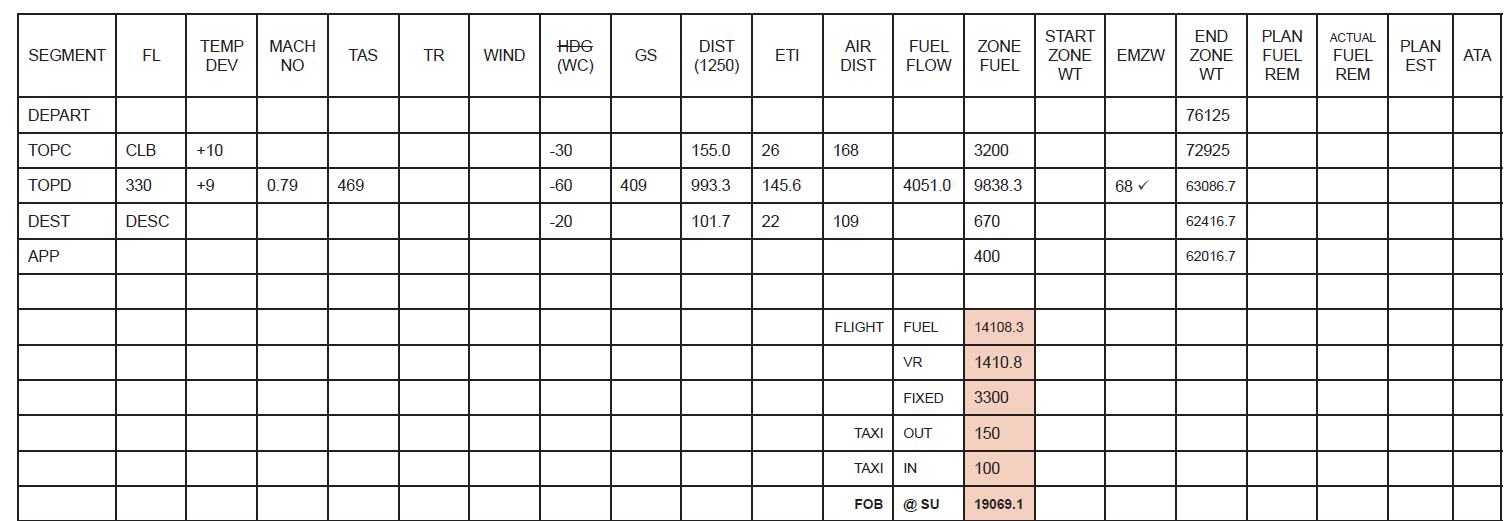What is the tolerances in the ATPL Flight Planning Exam?
One of the most common questions I get from students preparing for the ATPL Flight Planning exam is:
“What is the tolerance for the exam?”
While it sounds like a straightforward question, the answer is more nuanced than you might think.
The Myth of a Fixed Tolerance
You may have heard someone claim they know the tolerance—perhaps “1%,” “4%,” “50kg,” or some other figure. Unfortunately, it doesn’t work like that.
For most exam questions, you’ll simply type in your answer without seeing any options. Even in the few multiple-choice questions, knowing the tolerance wouldn’t change your choice—you’ll always pick the closest answer.
However, understanding tolerance can be helpful when marking practice exams or diagnosing errors in your calculations.
What Determines If You’re “Within Tolerance”?
The key factor in determining whether your answer is close enough to the correct one is understanding why your answer differs. As you’ve likely discovered, Flight Planning involves countless decisions that can affect the outcome, including:
- Altitude selection
- ISA deviation
- TAS
- Track
- Wind component
- Groundspeed
- RSWT
- Distances
- EMZW
…and many more.
In theory, the only variable that should differ between your flight plan and CASA’s is the wind component. Variations in wind affect groundspeed, ETI, zone fuel, and end zone weights.
The Role of the Whiz Wheel
You might have noticed that no two whiz wheels are exactly alike—small variations in printing or interpretation can lead to differences. For example, you might calculate a headwind of 34 knots, but someone else sees 32 or 36 knots using the same tool.
For short sectors (~400 NM), these small differences have negligible effects on fuel. Over long sectors (1500+ NM), however, even slight variations can result in differences of a few hundred kilos.
How to Diagnose Errors
When studying or taking practice exams, investigate why your answer differs:
- If it’s due to a procedural error (e.g., wrong flight level, incorrect Mach number), there’s no excuse—you need to fix it. 🙃
- If it’s due to a slight difference in wind component interpretation (e.g., 40 knots vs. 42 knots), you’re likely within tolerance. Larger discrepancies (e.g., 40 knots vs. 60 knots) suggest a procedural mistake.
Checking Your Process
To confirm your process, try this method:
- Use the Wind Components from Worked Answers:
Redo your flight plan using the wind components provided in my worked example. - Compare Your Results:
If you follow all procedures and rounding rules correctly, your answers should match exactly. - Investigate Discrepancies:
If your answers differ, explore where you went wrong. This can help identify procedural errors without falsely blaming the wind.
Practice with a Basic Flight Plan
If you don’t have the ATS textbook, here’s a Basic Flight Plan to practice. This simplified plan eliminates the need for RSWT or map references, focusing purely on procedure.
Using the provided wind components, your answers should match mine if you follow the correct steps. If they don’t, review your process, pinpoint mistakes, and correct them.
Final Thoughts
Understanding tolerance isn’t about guessing a fixed number—it’s about knowing how to identify and resolve discrepancies in your flight planning. By focusing on the why, you’ll develop the skills to consistently deliver accurate results, both in practice and in the exam.
Good luck, and keep refining your process!



